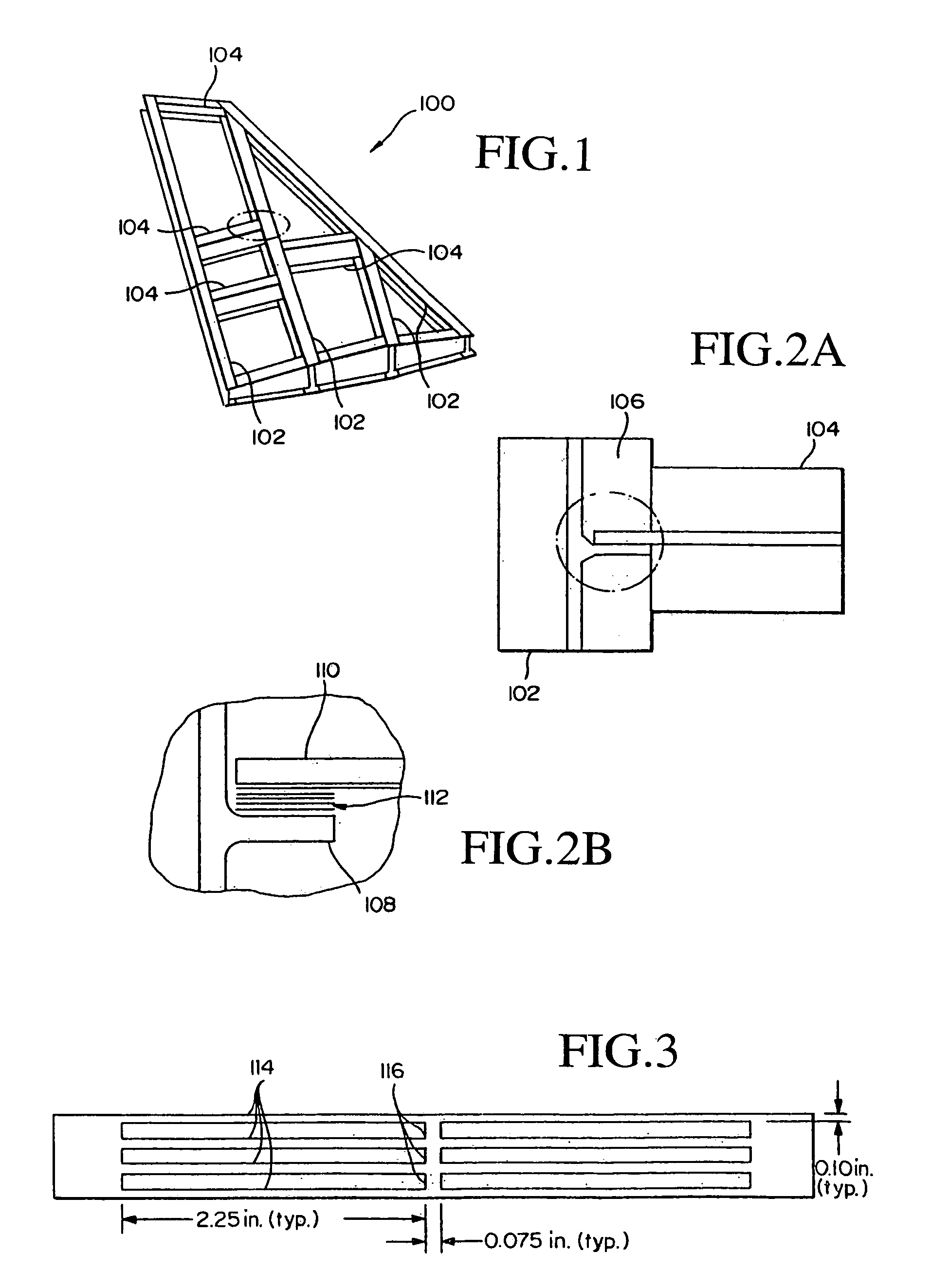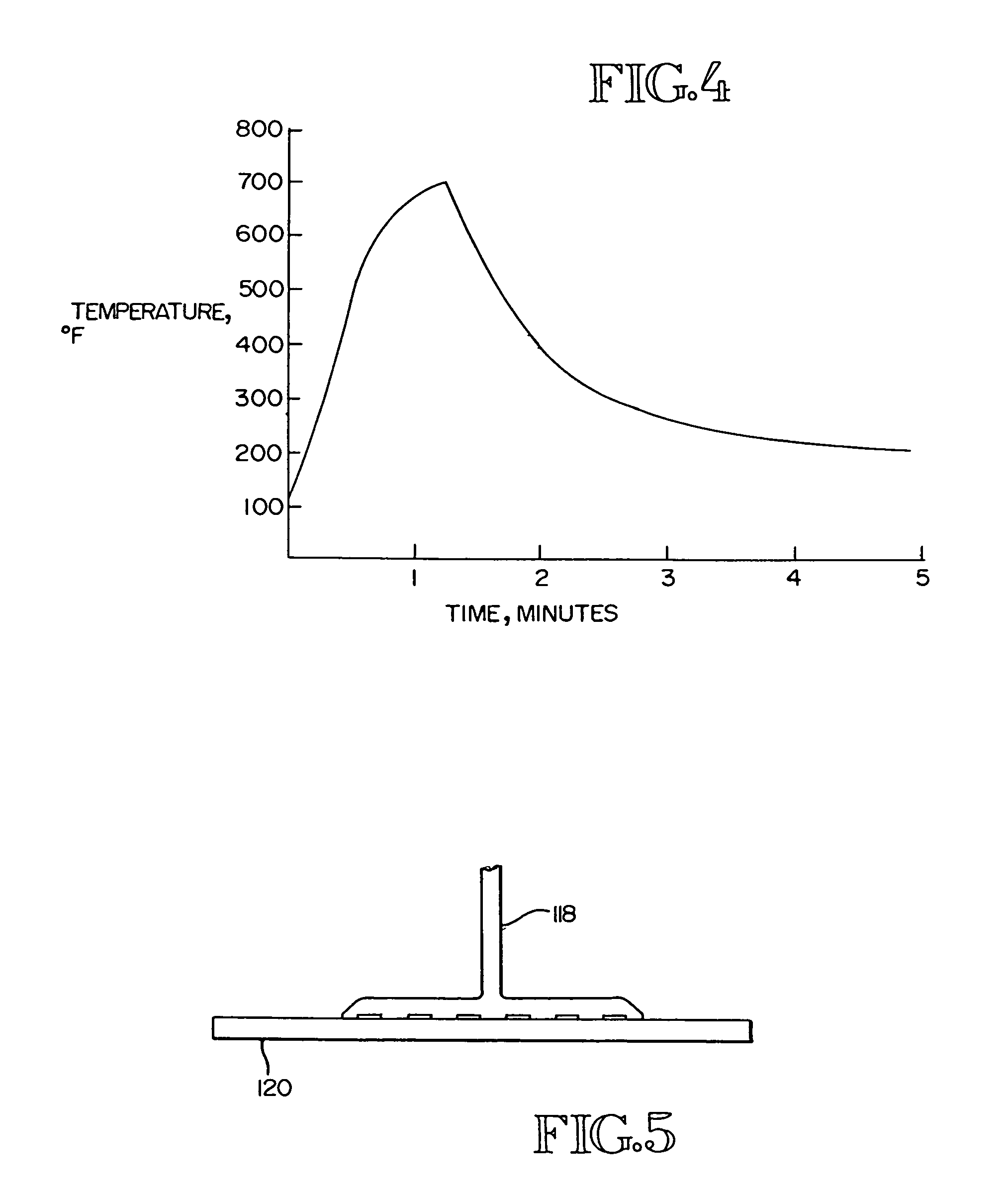Resistance welding of thermoplastics in aerospace structure
a technology of thermoplastic resin and aerospace structure, which is applied in the direction of climate sustainability, metal-working apparatus, layered product treatment, etc., can solve the problems of increasing the overall time required to fabricate each part, increasing the cost of organic resin composites, and affecting the quality of the finished produ
- Summary
- Abstract
- Description
- Claims
- Application Information
AI Technical Summary
Benefits of technology
Problems solved by technology
Method used
Image
Examples
Embodiment Construction
[0060]As shown in FIG. 1, a typical composite wingbox 100 designed for assembly without fasteners includes a plurality of longitudinal spars 102 with transverse ribs 104 interspersed along the run of the spars. The ribs 104 and spars 102 are joined at rib-spar web lap joints 106, which are schematically illustrated in FIG. 2. Each lap joint involves a tab 108 fabricated into the web of the spar and a tongue 110 at the end of the rib web. The cap of the rib is cut back at each joint so that the rib web can slide between the spar caps. As shown in FIG. 6, the welded wingbox 100 is completed by welding an upper skin 602 and lower skin 604 to the spar caps and rib caps.
[0061]The overlap between the tab and tongue defines the bondline where we position a multistrip susceptor 112 to form a weld or adhesive bond between the spar and rib webs by applying a suitable voltage across the bondline. The multistrip susceptor 112 includes a metal foil of the type shown in FIG. 3. The foil includes ...
PUM
| Property | Measurement | Unit |
|---|---|---|
| thick | aaaaa | aaaaa |
| thick | aaaaa | aaaaa |
| pressure | aaaaa | aaaaa |
Abstract
Description
Claims
Application Information
 Login to View More
Login to View More - R&D
- Intellectual Property
- Life Sciences
- Materials
- Tech Scout
- Unparalleled Data Quality
- Higher Quality Content
- 60% Fewer Hallucinations
Browse by: Latest US Patents, China's latest patents, Technical Efficacy Thesaurus, Application Domain, Technology Topic, Popular Technical Reports.
© 2025 PatSnap. All rights reserved.Legal|Privacy policy|Modern Slavery Act Transparency Statement|Sitemap|About US| Contact US: help@patsnap.com



